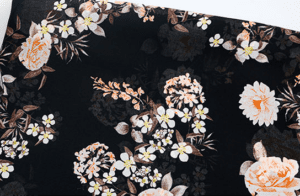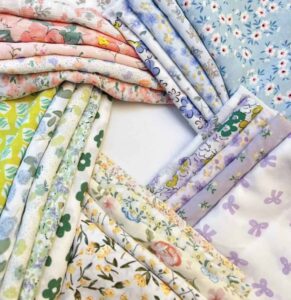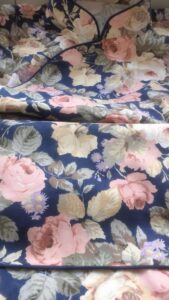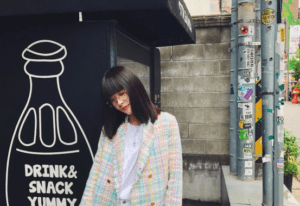cotton fabric?
A: Easy decolorization, wrinkling, shrinkage, strong alkali resistance, but not acid resistance, good resistance to high temperature, suitable for a variety of detergents and soap washing. The main properties of cotton fiber are twisting, strength, moisture absorption, heat resistance, alkali resistance.
hemp fabric?
A: high strength, moisture absorption than cotton fabrics, mold resistance, not easy to moisture mold, bright color, not easy to fade, high ironing temperature. Feel coarse and hard, lack of elasticity and luster, coarse fiber, strength.
wool fabric?
A: warm and elastic, feel smooth, rubbing less wrinkles, luster soft, wool fiber is curly, longer than cotton fiber.
silk fabric?
A: soft and smooth, colorful, moisture-absorbing and heat-resistant, not light-resistant, water-resistant, alkali-resistant. The fabric is thin, soft, smooth and lustrous, the silk fiber is long and thin, strong, and has a sticky hand feeling.
chemical fiber fabrics?
A: Good coloring, not easy to decolorize, easy care, not easy to wrinkle, but the comfort level is not too good, try not to contact the skin directly.
Tencel fabric?
Tencel is a natural fiber extracted from natural plants, it is breathable, smooth to the touch, comfortable to wear, but the firmness is poor, there is fading phenomenon.
viscose fiber fabric?
A: Knead crease less, fiber long and neat, thickened and hardened after soaking, easy to pull off. Soft touch, good luster, moisture absorption and breathability, good dyeing, with a certain degree of stereotypes.
PU products?
A: PU is a synthetic fiber, can be directly washed with water, not machine washable, not very breathable.
silk?
A: good luster, feel comfortable; no ball, no static electricity, washable, dry-cleanable. Not easy to bleach, warmth is better than cotton and linen, warm in winter and cool in summer, breathable. Better heat resistance, not resistant to salt water erosion.
fine-spun pure linen?
A: With a fine, light, stiff, smooth style, with good breathability and comfort.
interwoven hemp fabrics?
A: interwoven hemp fabric texture is fine, firm and durable, feel are softer than pure hemp fabric, more comfortable to wear.
polyester blended fabric?
A: Polyester blend luster soft bright, non-iron, solid and durable, shrinkage rate is smaller than pure silk.
soybean fiber?
A: Soybean fiber is extracted from soybeans, soybean fiber generally has the luster of silk, imitating the feel of cashmere and the comfort of cotton fabrics.
corn fiber?
A: Corn fiber has a special dry, wrinkle-resistant properties.
polyester?
A: Polyester belongs to the polyester fiber, the fabric is stiff, no wrinkle, good conformability, high strength, durable, light resistance, but easy to produce static electricity and dust absorption, moisture absorption is poor.
spandex?
A: Spandex has good elasticity, smooth hand feel, small moisture absorption, not easy to deformation, machine washable, poor heat resistance.
nylon?
A: Nylon is the so-called nylon. Dyeing is good, wear light, not easy to lose color, good waterproof, windproof, high abrasion resistance, good elasticity.
acrylic?
A: It has the characteristics of soft and warm, good strength, flat surface, tight structure, not easy to deformation, and very little shrinkage after washing.
vinegar woven fiber?
A: chemically processed from natural materials containing cellulose, with the style of silk, light and comfortable to wear, with good elasticity and recovery function. But not easy to wash, color fastness is poor.
Polypropylene characteristics?
A: Polypropylene appearance like plush silk or cotton, waxy feel and luster, elasticity and recovery in general, not easy to wrinkle, small specific gravity, light, clothing Shu sex is good, can be faster to pass sweat, so that the skin remains comfortable, strength and wear resistance are better, durable, not high temperature resistance.
vinylon?
A: moisture absorption, synthetic fibers in the best, known as “synthetic cotton”. Strength than nylon, polyester poor, chemical stability, not strong acid, alkali resistance. Sunlight resistance and weather resistance is also very good, but it is resistant to dry heat and not hot and humid (shrinkage) the worst elasticity, the fabric is easy to wrinkle, dyeing is poor, the color is not bright.
linen-cotton blend?
A: cotton moisture absorption, dyeing, warmth, hemp has high strength, good natural luster, bright dyeing, not easy to fade, heat-resistant good. Hemp-cotton blend, the appearance is not as clean as cotton fabric but good luster, a sense of softness, more refreshing, good heat dissipation, not easy to fade.
polyester and linen blend?
A: Polyester is not easy to deformation, not lint, hemp strength, good luster, not easy to fade, polyester and linen blend to make up for some of the shortcomings of the fabric cool, good moisture absorption, comfortable to wear, easy to wash and dry. Reduce wrinkling, pilling.
hemp silk?
A: fine texture, light, soft, smooth, brace, clear surface weave, full of particles, luster and glitter, a good sense of texture.
Bali yarn?
A: It is characterized by fine yarn and high density, and high transparency, also called glass yarn. The texture is very light and thin, with good comfort on the body, good moisture absorption and breathability, unique thin, thin, cool and other styles.
khaki fabric?
A: The texture of the fabric is tight, thick, firm, with good wear resistance, brace, weave pattern clear.
tribute satin?
A: The surface is smooth, delicate, soft to the touch, good luster, good elasticity, tight texture is not easy to deformation.
crepe fabric?
A: The surface has a longitudinal uniform wrinkles of thin plain cotton fabric, also known as crepe. The feel is crisp and soft, with good elasticity in the weft direction. The fabric surface is wrinkled and uneven, light and soft, smooth and novel, easy to dye, and very suitable for the dyeing process of the customized platform.
Oxford fabric?
A: Also called Oxford spinning, mostly made of polyester polyester-cotton blended yarn interwoven with cotton yarn. It is easy to wash and dry quickly, has a loose feel, good moisture absorption and comfortable to wear. Appearance like color woven fabric. Good quality waterproof oxford cloth can be filled with water like a bucket, will not leak.
cotton satin
A: It is a satin cotton product with the luster of silk and the style of satin, with a soft hand and thick texture, elasticity, comfortable to wear and good color appearance.
velvet fabric?
A: Soft to the touch, good warmth, comfortable to wear, soft color and luster of the appearance of the cloth.
long-staple cotton?
A: Moisture absorption and perspiration, good coloring, good strength, good stretchability. Soft handfeel, soft luster, rustic, good warmth.
camel wool?
A: It is a coarse woolen fabric with soft and elastic texture, rich pile, thick hand, soft and warm.
Felt blend characteristics?
A: With similar appearance style and basic characteristics with pure wool fabric, more delicate appearance.
What are the characteristics of cashmere?
A: light texture, and very warm, soft, slim, smooth, thin, elastic, and natural soft color and good moisture absorption, good wear resistance.
mohair?
A: High strength, high elastic recovery rate, good wrinkle resistance, good abrasion resistance and moisture absorption, good stain resistance, good dyeing, not easy to shrink and not easy to shrink.
camel wool?
A: Lighter color, weak luster, smooth and soft hand, good elasticity and strength, good warmth and good wear resistance.
worsted wool fabric?
A: clear weaving, bright and soft colors, tight texture, soft hand, stiff and elastic.
Pailee?
A: Paired polyester is a mixture of polyester, the surface is clean, light texture, feel sharp, brace anti-wrinkle, easy to wash and easy to dry, have good wearing performance.
mercerized wool?
A: Soft luster, delicate and soft, strong moisture absorption, good breathability, comfortable and non-sticky, with general warmth, and keep people fresh, with good heat resistance.
maiden?
A: A kind of coarse spinning wool fabric, feel rich, tweed surface fine and clean dry, solid, elastic, wear-resistant and not easy to pilling, soft color and beautiful.
Wada?
A: It is also known as wadding, which is the English translation. The fabric feels sturdy and firm, with body and bone, tight, elastic enough, smooth surface, even color, even strip, clear, full, natural and soft luster.
thin tweed?
A: The texture is thin, comfortable to wear, brace, good moisture absorption, good ventilation.
plush?
A: Also known as sea tiger pile, pile flat and upright, hair from the silk dense firm, good warmth, pile surface luster bright, soft, feel rich and thick, warm and light, with good wearability.
What are the methods to identify textiles?
A: 1 burning, 2 fiber mirror observation, 3 hand feeling, 4 visual inspection
cotton fabrics burning?
A: When burning flame is yellow, smell and burning paper similar, ash less, into the gray-white.
woolen fabrics burning?
A: When burning curled, slow burning, smoke, blistering, fire that is extinguished, the smell of burning hair, ashes are blocky, fragile.
silk combustion?
A: When burning curled into a mass, the flame is blue, the fire is extinguished, the smell of burning hair, ashes in lumps.
hemp fabric burning?
A: When burning curled into a ball, ashes with cotton fabrics.
viscose fiber woven combustion?
A: When burning the same as cotton fabrics.
spandex burning?
A: burning when the curl, dissolve a hundred smoke, small flame, with burning melt dripping, can take advantage of the heat draw, smell with burning paint, ashes were black, shiny, hard spheres.
polyester burning?
A: the initial burn hair curl shrinkage melt into a glassy, can take advantage of the heat draw, the later flame is larger, bursting sparks and produce squeaking sound when the black melt dripping, the black smoke is a line of soot falling, ashes knotted into black spheres, hard texture.
acrylic burning?
A: When burning first melt, burning fast, flame larger, flash and sound, black smoke, pungent odor, burned into a lusterless black block, fragile.
burning of vinylon?
A: Near the burning side contraction, the initial flame is small, no smoke, and then the flame gradually increased, black smoke, pungent odor, the ashes are black lump, fragile.
polypropylene burning?
A: slowly burning while melting, candle odor, small flame, no ashes, burning part of the transparent ball, not fragile.
pure wool?
A: 100% pure wool, more than 95% is full wool.
pure new wool?
A: “pure” means 100% wool; “new” means wool fabric without recycled wool; characteristics: excellent quality, versatile, flexible 100% wool.
cashmere and wool pilling?
A: Cashmere sweater in the process must go through a shrink test process, the feel will be rich, smooth, with good resilience, but it is also easy to cause part of the wool free to the surface of the fabric, in wearing wool sweater or washing process, constantly undergo friction, and thus entangled into a ball, so wool, cashmere pilling is a normal phenomenon.
leather?
A: Clothing applications are roughly divided into cowhide, pigskin, sheepskin, artificial leather, synthetic leather.
leather is leather?
A: smell with the sense of smell, leather has a trace of fishy smell, gently folded by hand leather has fine lines appear, smooth color, soft to the touch. The surface of leather does not have fine lines with hand folding, and the smell of plastic with nose.
Sheepskin, pigskin, cowhide distinction?
A: cowhide pores core eyes broken small, irregular more uniform; goatskin pores eyes arranged into a water ripple grain, soft leather; pigskin pores are large and deep, mostly three groups, “word arrangement”; leather surface rough, not smooth oil obvious pores.
The most common three kinds of leather material?
A: There are generally sheepskin, calfskin, goatskin.
How to identify cowhide?
A: Generally speaking, the leather is thicker, the grain is meticulous and beautiful, the expansion strength is higher, and the pores are evenly distributed.
pecial leather into several categories?
A: Brushed leather, anti-fur leather, velvet material.
What is brushed leather?
A: The grain surface layer of the leather is rubbed away to form a fine sand grain-like form called abrasive leather.
fabrics for batik clothing?
A: Mainly cotton and silk.
knitted fabric: T25?
A: t means polyester. t25 means the knitted fabric contains 25% polyester.
milk protein fiber?
A: It is liquid milk dewaxed, plus softener into milk pulp, and then cleaned, spinning process and technology processing into milk silk.
cotton clothing fade?
A: That is because in order to ensure the characteristics of cotton, when dyeing can not be high temperature, so the phenomenon of fading will occur. (Chemical fiber dyeing to high temperature, so chemical fiber is not easy to fade)
difference between cotton T-shirt and silk T-shirt?
A: cotton T-shirt wearing comfortable, breathable and moisture-absorbent, but easy to deformation, decolorization, easy to wrinkle; silk T-shirt wearing light, soft and smooth, breathable and moisture-absorbent good.
difference between pure wool and blended sweater?
A: Pure wool sweaters are lighter and softer than blended sweaters, with better warmth and fluffiness.
double mercerized cotton?
A: It is treated with secondary high-pressure, burning, bright colors, non-staining, non-fading, soft, non-irritating to the skin, breathable, moisture-absorbent, and not easy to wrinkle.
eco-textile?
A: No harmful dyes, no chlorine-free bleaching process, no formaldehyde or formaldehyde residues in finishing, in line with ecological requirements, no insecticide and heavy metal residues in the product, in line with ecological requirements.
How to test the fabric tear strength?
A: There are three kinds of national standards: single seam method, trapezoidal method, falling hammer method.
Why is the summer T-shirt easy to lose color?
A: Because people are easy to sweat in summer, and the alkalinity of sweat is greater, in turn, the sun is strong, easy to peel the color, rather than pure color loss.
wool fiber?
A: It can bring warmth and fluffy comfort, so winter coats, scarves, suits and other clothes are almost always wool fiber. However, wool fiber will shrink when washed.
acetate?
A: Acetate belongs to a kind of artificial fiber, is a kind of imitation silk fiber.
What is nylon fiber?
A: Nylon fiber is a kind of artificial fiber, tension is particularly good, also not easy to wrinkle, not too absorbent, so wear a little stuffy flat breathable. Nylon fiber is often made of stockings, swimwear and other clothing that requires elasticity.
What is polyester fiber?
A: Polyester is the most widely used man-made fiber. Polyester fiber can present a variety of popular material effects and good affinity, often blended with natural fiber members together, for example: 60% cotton + 40% polyester fiber.
What is Modal?
A: There are many modal products, including Austria’s Lenzing Modal, Taiwan’s Taika Modal. There are also produced in Thailand and India. Lysol, modal are in line with the extraction from natural fibers, chemically treated and then made of recycled fiber, all belong to a viscose fiber.
























